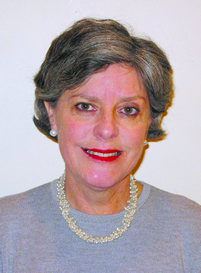
The lack of objective measurement or biomarker for assessment of fibromyalgia patients makes treating the condition a challenge, said Mary-Ann Fitzcharles, MD, Rheumatologist and Researcher at the McGill University Health Centre in Canada and an Associate Professor of Medicine at McGill University.
That means evaluation of fibromyalgia status remains subjective, lacks an ideal targeted outcome, and sometimes leads to outcome goals that differ between patient and physician, she said.
Dr. Fitzcharles will discuss those challenges along with a methodology known as “treat to target” as part of the discussion in the Tuesday afternoon ACR clinical symposium Pearls and Pitfalls in Fibromyalgia and Central Pain Syndromes.
The working definition of “treat to target,” she said, is attempting to “improve patient outcome by treatment with a pre-specified measure that captures the severity of the condition.”
Recognizing that the field is still far from a prevention strategy, the tenets of “treat to target” include a thorough evaluation of the patient to ensure that the clinician is not missing a diagnosis, such as drug-induced body pain, polymyalgia rheumatica, endocrine disorder, depression, or somatization.
“There are many medical conditions where there has been this paradigm of treat to target,” she said. “We see this in cardiovascular disease, we see this in treatment of diabetes, we see it in treatment of rheumatoid arthritis. But this is a very new concept for a condition that is very subjective, and this is why I’m really going to promote the idea that it really is a moving target, so it’s a particular challenge.”
Dr. Fitzcharles said that a key to the treat-to-target approach was to work with patients on determining which problem they’d most like to mitigate out of four core symptoms: pain, sleep disorder, fatigue, and mood disorder.
“You try and assist the patient and say, well, how much anxiety, how much depression is there? Is sleep the big problem? Is this person lying recumbent for 13 hours a day? Which is amazing – many people do,” she said. “So try and look to see where there might be an opening that you can perhaps impact upon a symptom. One sort of gets the feeling that if you can just get that little train on the tracks, give it a little push, then hopefully it will keep on going.”
As society has become more pill-oriented during recent decades, the idea that non-pharmacological strategies are a vital component of treatment may be difficult for patients to accept, she said. But mind-body activities have proven to be just as effective for fibromyalgia patients with the added bonus of no side effects. Those activities include yoga and moderate exercise, especially water activities.
The U.S. Food and Drug Administration has approved some drugs for the treatment of fibromyalgia, including two that change some of the brain chemicals (serotonin and norepinephrine) that help control pain levels: duloxetine (Cymbalta) and milnacipran (Savella). The other approved drug, pregabalin (Lyrica), helps block the overactive nerve cells involved in pain transmission.
Dr. Fitzcharles stresses that opioids are not currently recommended as an intervention for fibromyalgia, given that their side effects include sleep disturbance, fatigue, and depression.
Carmen Gota, MD, Staff Physician in the Department of Rheumatology at Cleveland Clinic, also will speak during this session about what functional MRIs can tell clinicians about fibromyalgia pathogenesis and diagnosis. The Cleveland Clinic has developed a registry of nearly 1,000 patients that have presented with fibromyalgia or central pain syndrome.


